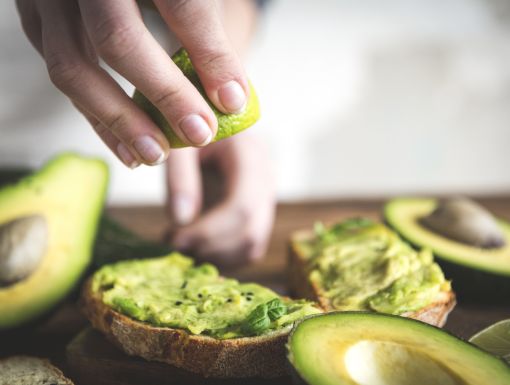
How Many Calories Are In Butter?
If you’ve ever found yourself in a restaurant spreading soft butter over just-baked bread and wondering how many calories were packed into the creamy spread, you’re not alone. One tablespoon of butter contains 102 calories, but don’t fret. While these calories can easily rack up, research shows that butter can be included in small amounts as part of a balanced diet. Read on to learn more about the nutritional stats of butter, how much is too much and butter alternatives you might enjoy.
Is butter a fat?
Made from the fat and protein components of milk or cream, butter has a rich flavor and is commonly used as a spread, as well as an ingredient in cooking and baking.
How much fat is in butter?
Because it’s primarily composed of fat, butter is a calorie-dense food. One tablespoon (14 grams) of butter contains 102 calories, which is similar to a medium-sized banana, and about 11.5 grams of fat, 7 of which come from saturated fat.
It also contains several vitamins, including fat-soluble ones. Some vitamins found in high amounts in butter include vitamins A, D, E and B12. However, butter doesn’t contribute much to our total daily intake of these vitamins because we usually consume it in small amounts.
How much butter can I eat?
When used as a teaspoon here and there, butter has few known adverse health effects. However, eating butter in large amounts may very well lead to weight gain and associated health problems, especially in the context of a high-calorie diet.
Most major wellness organizations recommend limiting your saturated fat intake to less than 10% of your total daily calories. For example, if you eat 2,000 calories per day, this translates to about 22 grams of saturated fat. One tablespoon of butter contains 7 grams of saturated fat, or about a third of the total recommended daily amount of saturated fat. So, if you’re eating other foods that contain saturated fat, aim for no more than 1 tablespoon of butter per day.
To schedule a nutrition consult, whether virtually or in-person, contact us at nutrition@ochsner.org or call us at 985-898-7050.
Which type of butter should I buy?
The butter aisle can be almost as overwhelming as the yogurt selection, with options ranging from plain old butter to margarine to olive oil and coconut oil blends. It can be difficult to know what’s really a healthful option, and what’s just good marketing.
As a general rule of thumb, butter is a better choice compared to margarine (which may contain trace amounts of trans fats known to raise bad LDL cholesterol and increase the risk of cardiovascular disease) and other highly processed fat substitutes. Still, plenty of alternatives like avocado and Greek yogurt are lower in saturated fat and serve up added health benefits.
Here are a few of our top picks for butter and butter alternatives.
Real butter
- Look for grass-fed and unsalted options such as those made by Kerrygold and Vital Farms
- Per tablespoon: 102 calories, 11.5 grams fat, 7 grams saturated fat, 0 - 90 milligrams sodium
- Ingredients: Cream/sweet cream
Earth Balance Vegan Buttery Spreads & Sticks + Smart Balance Original Spread
- Per tablespoon: 90 calories, 10 grams fat, 2.5 grams plant-based saturated fat, 90 milligrams sodium
- Ingredients include non-GMO vegetable oil blend (canola, palm, soybean oil), pea protein, salt
Coconut oil
- Per tablespoon: 120 calories, 14 grams fat, 12 grams plant-based saturated fat, 0 grams sodium
- Has a texture like butter at room temperature; can use cup-for-cup in place of butter
- Try Nutiva’s Organic Coconut Oil with Butter Flavor. It’s organic, vegan and non-GMO.
Avocado
- Per tablespoon: 22 calories, 2 grams fat, 0.5 grams plant-based saturated fat, 1 milligram sodium
- Use mashed avocado in place of half the amount of butter called for in a recipe
- Save 78 calories and 6 grams saturated fat per tablespoon of butter swapped out
Greek yogurt
- Per tablespoon: 11 calories, 0.3 grams fat, 0.2 grams saturated fat, 4.5 grams sodium
- Use plain, low-fat Greek yogurt in place of half the amount of butter called for in a recipe
- Save 89 calories and 7 grams saturated fat per tablespoon of butter swapped out
A few final thoughts
- A teaspoon or two of real butter is just fine! But cooking with sticks of butter can quickly add in unwanted calories.
- Tub spreads typically melt and spread better than sticks; experiment to find what you like best.
- Experiment with butter alternatives like avocado and Greek yogurt to boost nutritional value.
Editor’s note: Registered Dietitian Molly Kimball offers brand-name products as a consumer guide; she does not solicit product samples nor is she paid to recommend items.


